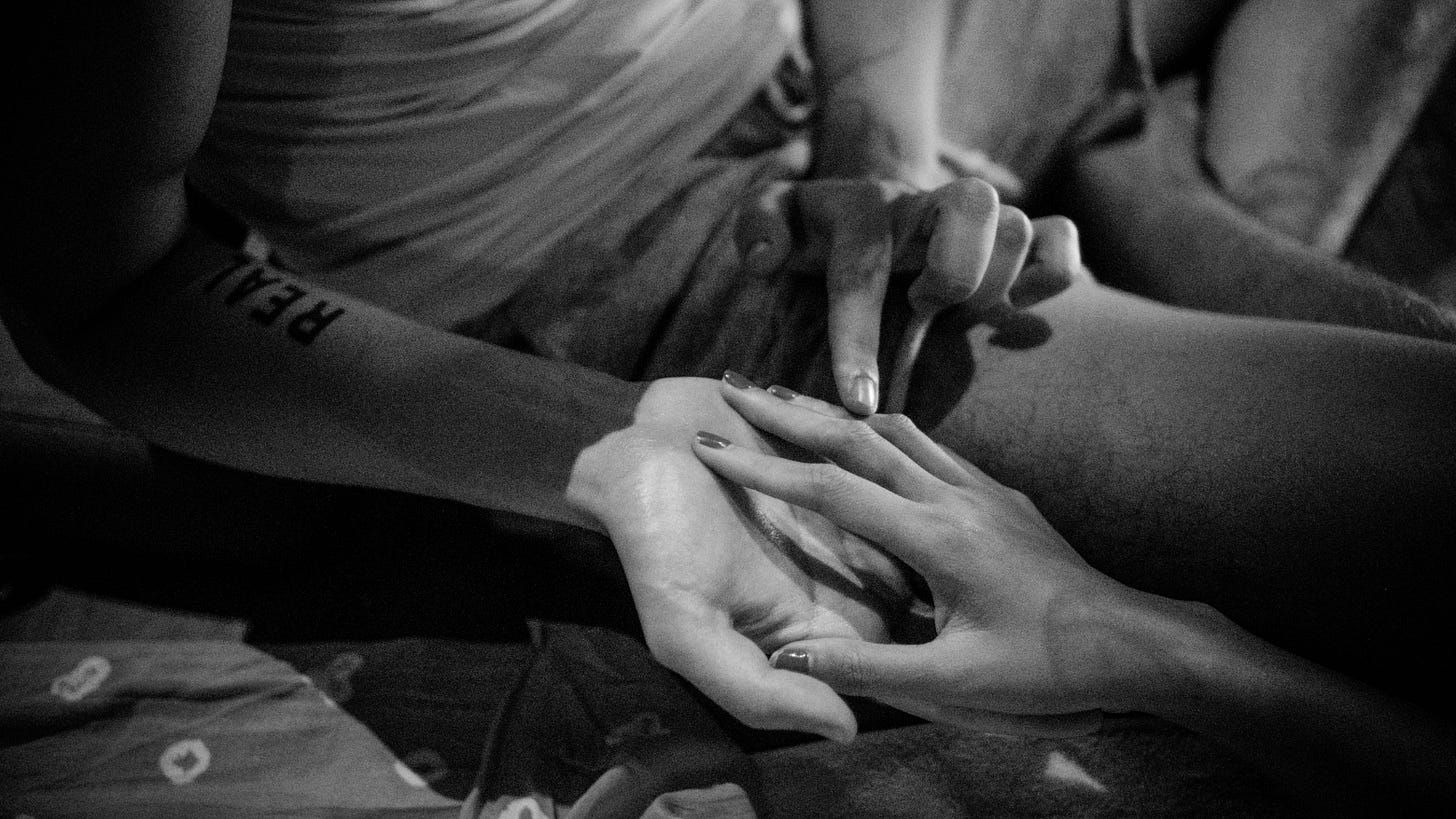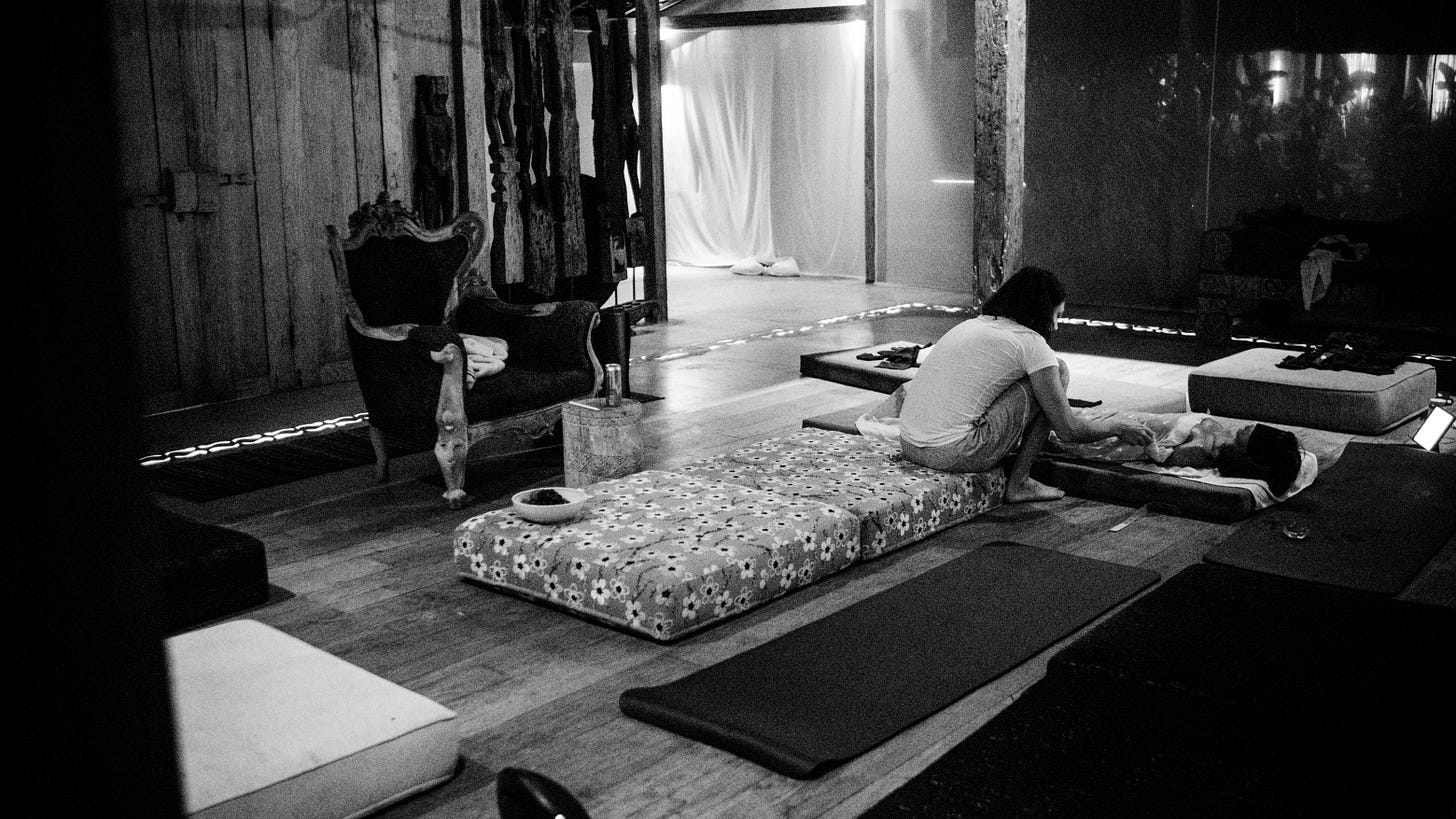Why We Teach Chinese Sensual Massage
Traditional Tantra contains no bodywork. We had to look elsewhere.
The Shakta Tantric tradition we preserve from West Bengal is extraordinarily sophisticated in its approach to energy, ritual, and consciousness. But it contains absolutely zero bodywork. No massage. No therapeutic touch. Nothing.
This absence reflects how Tantra developed within the constraints of Indian Ayurvedic medical philosophy. Ayurvedic massage, particularly in Panchakarma treatments, operates under strict gender segregation not merely from social convention but from physiological reasoning. Ayurveda understands the body as a system of humors, doshas that require balancing through specific interventions. Touch in this framework serves mechanical purposes: stimulating lymphatic drainage, moving toxins toward elimination channels, preparing the body for purification procedures.
The gender segregation in Ayurvedic massage stems from the belief that cross-gender touch introduces energetic disturbance into what should be a purely therapeutic intervention. A man touching a woman, or vice versa, activates sexual energy, heat, stimulation of systems that Panchakarma specifically aims to calm and purify. The entire logic of Ayurvedic detoxification requires cooling, quieting, turning the body’s resources inward toward elimination rather than outward toward arousal or engagement.
From this perspective, the segregation makes perfect sense within its own framework. If your goal is physiological purification and you believe arousal interferes with that process, obviously you avoid the exact configuration most likely to produce arousal. The problem isn’t with Ayurvedic reasoning. The problem is that this medical model became the default for all massage in Indian culture, including contexts where purification isn’t the goal and arousal isn’t a problem.
Tantra imported this limitation wholesale despite operating from completely different premises. Tantric practice doesn’t aim at purification or toxin elimination. It works with energy itself, with consciousness, with the interaction of opposites. The entire theoretical framework centers on Shiva-Shakti polarity, masculine-feminine union, the creative tension between opposites. Yet when it came to bodywork, Tantra simply adopted Ayurveda’s medical model without questioning whether it served Tantric purposes.
This represents a failure to think through first principles. If your system genuinely understands that consciousness manifests through masculine-feminine polarity, and if you’re claiming to work directly with that polarity, then avoiding cross-gender contact makes no sense. You’re deliberately excluding the exact configuration your theory says is most revelatory. It’s as if chemistry developed elaborate models of how molecules bond while refusing to let different elements actually interact.
The Western massage tradition followed a completely different trajectory. Swedish massage emerged in the 19th century from European gymnastics and anatomy studies, treating the body as a mechanical system of muscles, joints, and circulation. Gender of practitioner and receiver didn’t matter because nothing energetic or subtle was being addressed. You were manipulating tissue, not working with consciousness.
This mechanical approach dominated Western bodywork until the 1960s, when Esalen Institute in California began experimenting with something radically different. Esalen massage emerged from the human potential movement’s interest in psychology, consciousness, and peak experience. The developers, including pioneers like Charlotte Selver and Bernie Gunther, weren’t trying to fix injured tissue or improve circulation. They wanted to use touch as a vehicle for altered states of consciousness, for accessing psychological material, for experiencing what they called “sensory awakening.”
Esalen massage is slow, flowing, rhythmic in ways that induce trance states. It works with long, connected strokes that blur the boundary between body parts, creating a sense of wholeness rather than segmented anatomy. The person receiving it often enters dreamlike states, accesses memories, experiences emotional releases that have nothing to do with muscle tension. The massage became a technology for consciousness exploration disguised as bodywork.
But Esalen never explicitly addressed polarity or gender dynamics. The techniques work regardless of who’s touching whom. A man can give Esalen massage to another man and produce the same trance-inducing effects as cross-gender contact. This makes sense given Esalen’s psychological rather than energetic framework. They were interested in consciousness states, not in how masculine and feminine energies interact.
What’s missing in both traditions, Indian and Western, is any serious engagement with what happens specifically when masculine and feminine energetic fields meet through touch. Ayurveda avoids it deliberately for medical reasons. Tantra avoids it accidentally by importing Ayurvedic conventions. Esalen doesn’t avoid it but doesn’t specifically pursue it either, treating gender as irrelevant to the consciousness-altering effects they’re after.
Yet the subtle body, the sukshma sharira, is structured by masculine-feminine polarity. This isn’t metaphor or psychological projection. It’s describing actual patterns of how energy organizes itself in human systems. Masculine structure tends toward linear flow, directional focus, penetrating quality. Feminine structure tends toward circular flow, diffuse awareness, receptive quality. Every person contains both, but in different proportions and configurations.
These patterns become most visible when opposite polarities meet. A masculine field encountering feminine energy reveals its structure through contrast. Where masculine energy flows smoothly within itself may show immediate resistance or confusion when it meets feminine circuitry. The same applies in reverse. Feminine energy that seems perfectly fluid in isolation may freeze or fragment when contacted by masculine directness.
You cannot perceive these dynamics through introspection alone. Working only with your own energetic body is like trying to understand magnetism by examining a single pole. You need opposite charges to reveal what’s actually happening. This is why cross-gender bodywork isn’t just useful or interesting. It’s necessary for understanding the fundamental organizing principle your entire system supposedly addresses.
Dr. Stephen Russell’s Taoist Sensual Massage operates from this understanding. The Taoist tradition built complete systems of practice around yin-yang interaction between actual bodies, not just abstract theory. Their approach to touch reflects centuries of observation about how opposite energies reveal each other.
Russell’s technique works at speeds that make both Ayurvedic and Western massage look frantic. A single stroke might take five minutes. The hand moves so slowly that ordinary perception of movement almost disappears. What remains is pure sensation, pure awareness of exactly how energy encounters your structure.
This creates conditions nothing else produces. When touch moves this slowly, the nervous system cannot habituate. Each moment arrives fresh, overwhelming in its intensity. The usual filtering mechanisms that protect you from feeling too much simply cannot keep up. Everything comes through unfiltered. And because the touch is explicitly working with masculine-feminine polarity, using different approaches depending on the energetic structure being contacted, what comes through isn’t just sensation. It’s direct perception of how your own polarity organizes itself, where it flows freely, where it encounters resistance or confusion.
The effect is dreamlike, narcotic, though nothing sedating occurs. Rather, ordinary defended perception dissolves. Time stops functioning normally. The boundary between self and other becomes permeable. You enter states that feel like moving backward through your own history, approaching something primordial. As if consciousness remembers its origin, the moment it first took form, and the massage removes enough structure that this memory surfaces.
We integrate Russell’s work into our Sensual Liberation Retreats because it addresses what Tantric practice alone cannot reach. The kriyas we teach are precise, powerful, capable of dramatic shifts in consciousness. But they work indirectly, through visualization and breath. Russell’s massage works directly, through contact, through opposite polarities meeting in physical space. Both approaches are necessary. Neither is complete without the other.
We also teach this work outside the retreat context. We travel on private invitation to demonstrate and transmit this massage. Sometimes Michael works alone. Sometimes with his shakti, depending on requirements.
If you’re drawn to bodywork at this level of subtlety, reach out. Russell’s approach remains relatively unknown, accessible only to those who’ve sought something beyond conventional touch. But for those with genuine interest and sufficient sensitivity, transmission remains possible.








